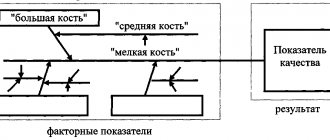Among the currently available tools designed to select and evaluate the effectiveness of solutions, the Delphi method, or, as it is also called, the Delphi method, occupies a special place. It is very effective both in everyday life and in the professional field of activity, because it allows you to take into account the opinions of all people who are related to any issue, through the consistent combination of considerations, proposals and conclusions, and then come to a specific agreement. The Delphic method is easy to use, and any person or group of people can use it, it is only important to know how it is done.
The essence of effective analysis
The method must conditionally include several parts, each of which is important; to satisfy the conditions of this concept, the following criteria are required: analysts, competent experts, current problem.
Its essence lies in the fact that experts are given a certain situation for which they can select a solution using the Delphi method. Each group member must offer his own way out of a problematic situation. A special feature of this analysis is the fact that experts are required to come to a common conclusion. Each of them works individually with the situation, then voices it in the team. They are obliged to exchange thoughts and ideas until they come to a common denominator.
Results of the Delphi method
Analysts, after experts provide a solution to a problem, consider each approach and help form an overall conclusion. The main idea of the Delphi method is that all experts, despite ideological differences and decision methods, will have something in common. This commonality is sought out by a group of analysts, combining similarities in all points of view into a single whole, which contributes to a unified theoretical solution to the problem. A solution method jointly selected by experts and confirmed by analysts is considered the most correct, because experts ultimately come to a common decision. This is the final point of the Delphi method.
History of practical application
This method was created in the 60s of the twentieth century. But it was originally associated with the ancient Greek oracle at Delphi. And he appeared completely by accident. In the 1950s, the US Air Force sponsored a project concerning changes in various areas of government life. This was one of the first examples of problem solving using the Delphi method. A group of experts was assembled, which, under the control of analysts, with the help of intensive surveys, came to some general conclusion on the chosen topic. Following the example of the Delphi method, many problems were predicted and solved, and it proved its effectiveness. Moreover, expert assessment of the further development of science and the military in this way became so popular that in 1964 issues beyond the topic of science and the military were analyzed.
Main stages of the study
In order to solve examples using the Delphi method in practice, you need to know its structure. In total, this concept can be divided into several important stages:
- Creating sub-questions. The problem itself is sent to experts. It is proposed to break it down into subparagraphs. Options that occur more often than others are selected, then a list of the most popular ones is compiled.
- Recheck stage. The created questionnaire is again sent to the expert group, but this time they are asked to add certain information that they feel is missing from the questionnaire. Have a positive outlook on adding new aspects to a situation that requires consideration.
- Selection of solution. An expert group meets to discuss and solve various aspects of the problem, which is considered in the form of several components. The priority is the constant convergence of expert opinions, as well as the analysis of the most extraordinary or contradictory methods for solving the problem. Experts consult with each other throughout the entire stage in an effort to come to a common decision. They can change their points of view many times. Analysts help experts agree.
- Summarizing. The expert group is engaged in the selection of one common opinion, which, according to the Delphi method, is the most adequate as a solution to the problem. At the same time, the study may have another outcome, namely the lack of consensus on the question asked. In this case, if all aspects of the problem have been considered, but a solution has not been found, then a certain assessment of the situation is still given and recommendations are made.
Methods of collective expert assessments
Methods of collective expert assessments, in addition to the Delphic method, are divided into the collective method of generating ideas and the method of expert commissions.
The method of collective generation of ideas usually means the so-called “brainstorming” and “brainstorming”.
When using this method, there is a joint discussion of the problem and the search for its solution. There are some rules for organizing a brainstorming session.
- at the first stage, the proposal of any ideas is allowed and criticism is not allowed;
- speaking time limit: no more than 2 minutes;
- repeated performances by the participant are allowed;
- speakers continue to develop previous thoughts;
- a permanent record of all statements and ideas;
- summing up intermediate results.
Stages of implementation:
- Determination of the composition of participants without mandatory specialization and belonging to the same age and profession.
- Description of the problem. It is necessary to indicate the reasons for the occurrence, the degree of knowledge, set a goal and propose possible solutions.
- Voicing ideas by survey participants with a written protocol for greater effectiveness.
- Generalization of information: identification of repetitions, highlighting promising thoughts, selection into groups.
- Discussion and criticism of ideas based on the list.
- Consideration of comments, highlighting and discussing the main thing, making a final decision.
Positive sides
Each method of solving a problem has its positive and negative sides. Let's look at the positive aspects of the Delphi method:
- Consensus. The main goal of the participants is to come to a common conclusion. From which it follows that at the later stages of the study they will not have disagreements about the issue. It will either be resolved by a general conclusion or will not be resolved at all.
- Distance. This method does not imply the presence of a group of people in one room/city. After all, you can answer questionnaires remotely, as well as propose or refute your own and other people’s concepts. This makes this method very convenient.
- Forecasting. This method can well predict events in a single version. One option, which, in the opinion of the expert group, should be the most likely, is considered correct.
In what cases is it used?
Delphi allows you to make forecasts by systematizing opinions about a situation of different groups of people. Therefore, it is used mainly to evaluate long-term problems, identify a topic and formulate a judgment based on various statements.
In combination with other techniques, it will turn out to be an excellent tool that you can rely on in the future. It is used most often to consider both personal prospects in the future, as well as technical and organizational ones.
Negative sides
There are many more negative aspects to this technique. Some of them are not very significant, while others, on the contrary, are capable of smashing to smithereens the entire set of proposed ways to solve the problem. However, this does not mean that it is ineffective. Let's look at the arguments in more detail:
- Narrow thinking of the group. The majority opinion is not always the only correct one. This is a thesis that does not require proof. Even though all points of view will be heard, it does not change the fact that the conclusion will be true or false. And due to the fact that the essence of the method lies in the adoption of one method, there cannot be several points of view that are opposite in meaning.
- Conformism. Research can be misdirected by a group of conformists trying to be part of the majority. Thus, they take the research down a deliberately false path.
- A large amount of time wasted. Each stage of the Delphi method lasts at least a day. And given the fact that the stages of surveys and summing up may be repeated, the study may be delayed.
- Different areas. A group of experts can be brought together from different institutions and sectors of society, which makes it very difficult to draw general conclusions, since due to differences in worldview it becomes more difficult for experts to agree with each other.
- Paradoxical. If you use the Delphi method on two different groups of experts, the conclusions drawn by them may differ radically. And since this method asserts that the final recommendations for solving the problem are correct, it turns out that we have two correct sets of recommendations at once, which in some cases is excluded.
- Originality and correctness of decisions. The most original or correct solutions may take a secondary place in the hierarchy of recommendations.
Who is taking part in the study?
The range of participants includes the following roles:
- facilitator who is responsible for organizing the process as a whole. He is responsible for selecting the remaining participants, moderating the work of the groups, and also makes a decision based on the results. Depending on the scale of the object of study, there may be several facilitators. It is better if they are from different structures, not adjacent.
- an expert group that consists of specialists in various fields relevant to the topic. This is necessary in order to consider the subject from all sides, taking into account all the nuances and complexities.
- a group of analysts that reviews the experts’ answers, identifies the general and the specific in them, and generates a new list of questions and recommendations for solutions.
Example of using the Delphi method
Surely, explaining the essence of this method of decision-making seems too complicated, for which below is an example of one company that is engaged in the oil field and wants to get information about the approximate date of the possibility of using robots instead of divers to inspect platforms under water.
The company assembles a group of experts from different areas of the oil industry (divers, engineers, ship captains, robot designers, etc.). The expert group is given a task, which they solve according to the above scheme. The results are as follows: robots can be used in the period from 2000 to 2050. The spread was too large.
The procedure is repeated. Experts listen to each other's opinions and form a common forecast. As a result, the overwhelming majority of responses were within the 2005-2015 period. A similar example of using the Delphi method allowed an oil producing company to plan the level of production and sales of robots in the oil industry. But is this method applicable to our country?
Advantages and disadvantages
+ The participants do not overlap with each other, they may not even know each other and have no idea with whom they are coordinating their opinions in the process. And this is convenient for those who experience excessive stress from the very thought that they will have to communicate with someone and defend their opinion, argue their point of view, and so on. In addition, the type of temperament also influences the quality of work, because no matter how professional a person with an introverted accentuation of character is, it will be much easier for him to give his assessment of what is happening without coming into direct contact with other participants in the process. + There is no pressure on experts to reach certain conclusions. Therefore, the study will take place without falsifying the results, which is important for obtaining the most honest and objective judgments.
— The number of participants is unstable, since the process is labor-intensive and time-consuming, which is why people may “drop out” for various reasons. — If the majority of group members have superficial knowledge of the complexity that has arisen, due to inexperience and so on, then, accordingly, such superficial and erroneous decisions will be taken into account.
The Delphi method: an example in practice in Russia
This method is quite applicable to all spheres of society. A good space to use is usually the political sphere. An example of using the Delphi method is the task of making the most accurate forecast about the leadership of United Russia in the elections of deputies to the State Duma of the Federal Assembly of the Russian Federation.
A group of experts from the political sphere of society (politicians, journalists, analysts, specialists in the field of election technologies, etc.) gathers. After which, each participant is sent the first version of the questionnaire, as well as basic information on this issue. Experts evaluate the problem, add information, change some aspects of the issue, etc.
After all the work, participants send their questionnaires to analysts. The results were different, with too much scatter. Therefore, analysts create an extended questionnaire, which takes into account the opinions of various experts.
Participants get acquainted with the questionnaire, find out each other’s opinions about the problem, and try to come to a common conclusion. They write down their forecasts, taking into account the new information, and send them back to the analysts. This happens until the results are as similar as possible. According to the results of the study, the chances of United Russia becoming the leading party in the elections were about 95%.
Delphic Oracle Method
The Delphic oracle method was invented in the USA in the mid-twentieth century by researchers Olaf Helmer, Nicholas Rescher and Norman Dalkey. Experts, using a new technique, tried to predict the impact of scientific discoveries on the methodology of military strategy. The resulting research method began to be called after the Delphic Oracle - the Delphi method.
The name comes from the area of Delphi, in which, according to ancient Greek legends, there lived an oracle, a fortuneteller. It was believed that he lived at the temple of the Olympian god Apollo, and everything he said was the truth, which should be taken literally.
Problems of use in Russia
The use of the Delphi method and examples of problem solving in Russia were found in very small quantities. This is due to the fact that:
- In the Soviet Union, analytics was a centralized process, which is why the conformity of many experts is extremely high. This suggests that the chance of highlighting the wrong solution to a problem increases.
- Lack of independent analytical structures.
- Lack of traditions. The Delphi method was not in demand in Russia earlier, which means there is little likelihood of its spread today.
Pros and cons of the method
Like any other decision-making technique, the Delphi technique has advantages and disadvantages. The first include:
- Ease of use.
- The process takes into account the opinions of all participants in both groups.
- Experts and analysts learn to think independently.
- The task at hand is studied from all sides.
Adjustable communication is another advantage of the Delphi method. The Delphic method is applicable in international relations, economics and other areas. There are several disadvantages to this method of forecasting and finding solutions:
- Event organizers have great powers. Therefore, experts are defenseless against them.
- A decision based on collective opinion is not always the right one.
- It is known that creative or creative solutions are often correct. But representatives of the analytical group reject them, considering them ridiculous and unpopular among the majority.
- The analytical stage takes a lot of time. You can solve the problem quickly. But it is unlikely that specialists will be able to conduct a qualitative analysis.
- Some participants are afraid to express their own opinions, which is why they lean toward the ideas of the majority.
- Organizers or presenters sometimes put pressure on experts and manipulate them.











